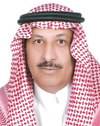Time-tested Saudi-US ties

On Feb. 16, I was one of the many people invited to a reception held at the US Consulate in Dhahran to celebrate US’ 239th Independence Day. The US Embassy in Riyadh and US Consulate in Jeddah had also organized similar events. For the information of readers, the celebration is held few months before July 4 for various reasons such as Saudi social and family engagements during the summer and due to the hot and sultry weather during the month of July in the Kingdom.
This year’s celebration was held in February to mark not only US’ independence but it also marked the 70th anniversary of a meeting between two giants in the histories of their respective nations, King Abdul Aziz, the founder of modern day Saudi Arabia and US President Franklin Roosevelt aboard US Navy cruiser USS Quincy in the Great Bitter Lake along the Suez Canal.
At the reception, I really enjoyed the brief speeches by US Ambassador to the Kingdom Joseph W. Westphal and Consul General in Dhahran Mike Hankey. They shed light on the historical meeting between the two great leaders. But it is important to many people to note the importance of the meeting that took place 70 years ago. The world was witnessing the end of WWII and the Saudis were suffering from global economic recession. During the war many of the Saudi oil wells were capped for protection and the Haj season was very slow at a time when many relied on the income from the Haj season. At the time of the meeting, the world was concentrating on Europe after the war but it was clear to many that Saudi Arabia was to become the next regional power.
As time passed, Saudi and American relations went to new levels of strategic importance. The diplomatic representation between the two countries was taken to higher levels and more diplomats were assigned to both countries’ diplomatic missions. And as time passed Saudi Arabia and the US became very close trade partners. The Saudi-American relations became one of the longest standing relations between any two countries. As time passed Saudi Arabia became a very important economic and political player in the area that helped in implementing post-war stability.
After the 1945 meeting, the end of WWII and the establishment of the United Nations, Saudi Arabia became more open to the world and major mega projects transformed Saudi Arabia into a modern state. After the death of Roosevelt short time after the meeting and the death of King Abdul Aziz in 1953, the relations between the two countries expanded and more meetings took place between the Saudi and American leaders with transparent discussions. And most important, both Saudis and Americans have learned how to work and manage any issue with each other in spite of the many differences between the two countries. And it is true that many differences would be seen now and then, but, as we know it, there are different interests among countries around the world. But the Saudi-American relations are not only confined to government and official levels. Many Americans came and worked in the Kingdom and developed life-long relations with many Saudis and the land. And there are hundreds of thousands of Saudis who visited or studied in the US. The relations between the two countries were able to ride any political turbulence due to difference of opinion over different issues in the area but leaderships of both countries had been able to navigate through turbulent waters.
Disclaimer: Views expressed by writers in this section are their own and do not necessarily reflect Arab News' point of view










































